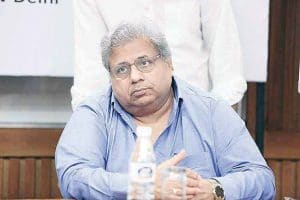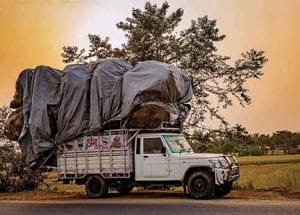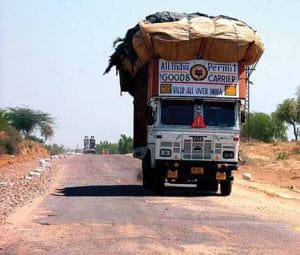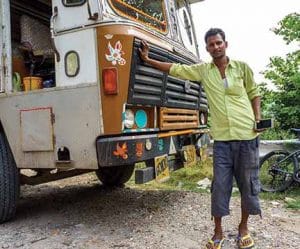Transporters have been demanding the status of MSMEs with the hope that it would benefit them.
Story by Deepti Thore
The road freight (transport) fraternity has been demanding the status of MSMEs for a long time. It is doing so with the hope that is would benefit them. However, the proposition does not look as simple as it made out to be. In a recent interaction with AITWA members, Vijay Kumar, Director, MSME Development Institute, MSME-New Delhi, expressed that the change in the definitation of MSME means that a transport business investing around Rupees-one crore and having a turnover of around Rupees-five crore will be called a micro-unit. A (transport) industry with an investment of Rs.10 crore and a turnover of Rs.50 crore will be called as a small scale industry, he mentioned. The one with an investment of Rs.50 crore and a turnover of up to Rs.250 crore will be called as a medium-scale enterprise, he added. Informing that the changes regarding MSMEs are part of the Rs.20 trillion financial package announced by the Government against the background of the pandemic, Kumar averred that the same will indirectly benefit the growth of industrial economy of India.
Drawing attention to the Udyog Aadhaar website (https://www.msmeregistration.org/), Kumar explained that transport businesses falling under the MSME segment should register as this would enable them to avail the advantages provided by the Government through ‘Udyog Aadhaar’ platform in a matter of few minutes. For registration, he informed, a valid ‘Aadhar’ identification and bank account number is required. Based on three categories A, B and C for manufacturing, and D, E, F for service segment, ‘Udyog Aadhaar’ said Kumar will enable many transport businesses to find ways to address their pain points. With the ‘D’ category defining the micro, ‘E’ category defining small and ‘F’ category defining medium, the ‘Udhyog Aadhaar’ initiative has been in force from July 01, 2020. It is in force as part of the new MSME definition announced by the Government.
New Definitions
 If a transport business would need to re-register itself as per the new set of definitions if it is holding a registration as per the old format, the benefit of doing so would qualify them to avail benefits akin to MSMEs in other fields with a similar turnover and investment. An interesting part of the change would be that a transport business with an investment of Rupees-six to Rupees-seven crore will now come under the small-scale and not under the medium-scale. This, in-turn, should empower it to avail of the benefits meant for small-scale enterprises. A big change is the positioning of the manufacturing and service sectors under the same category. The road freight (transport) segment coming under service sector. Stressing on the need to build facility centres for training the drivers and spotters, Kumar called for the need to refine the business model such that it is agile and robust.
If a transport business would need to re-register itself as per the new set of definitions if it is holding a registration as per the old format, the benefit of doing so would qualify them to avail benefits akin to MSMEs in other fields with a similar turnover and investment. An interesting part of the change would be that a transport business with an investment of Rupees-six to Rupees-seven crore will now come under the small-scale and not under the medium-scale. This, in-turn, should empower it to avail of the benefits meant for small-scale enterprises. A big change is the positioning of the manufacturing and service sectors under the same category. The road freight (transport) segment coming under service sector. Stressing on the need to build facility centres for training the drivers and spotters, Kumar called for the need to refine the business model such that it is agile and robust.
The new definitation of MSME necessitating transport businesses under the micro and small industry-scale, a need is also emerging for the road freight (transport) fraternity to calculate the emerging challenges in terms of other mediums of transport and an effort by the Government to bring down the freight rates. The need to refine the business model emerging as a key factor, especially in the wake of being internationally competitive, the micro and small-scale businesses could collectively invest in their own facility centres apart from those that impart training to drivers and helpers. The need for an all-round upgradation in efficiency being seen as the need of the hour to sustain and grow, the road freight (transport) fraternity could do with much work on the fleet side as well. They could not only get the drivers to drive more efficiently, they could also utilise the centres to impart service training for spare parts maintenance, for jigs and fixtures, etc.
Facility centres
Emphasising on building such centres even in areas that may not have transport services, Kumar averred that companies (10 to 15 of them) willing to do so would, under section 8, be provided with 80 per cent investment support with a upper limit of Rs.20 crore (by the Government on a no profit no loss basis). Built on a piece of land owned collectively by the companies, such centres could use the one time grant provided by the government to buy machines or equipment and hire employees, informed Kumar. Stating an example where the Government will provide a one time grant of Rs.18 crore if a group of transporters or their association was to come forward and build a facility centre for an investment of Rs.20 crore, Kumar explained that such a centre would help address issues like driver shortage as well. He urged AITWA to start two or three such centres across the country on a pilot basis.
Floating an idea where the centre could service trucks as well, Kumar mentioned that hard-to-get spare parts could be made, saving time and resources. Stating that a facility centre could provide a means of skill development as well as provide employment to skilled people, Kumar remarked, “Such an initiative will definitely benefit the transport sector.” “It will also help the sector to grow,” he added. Of the opinion that such a centre would receive approved DPR from the MSME institute, Kumar expressed that the road freight (transport) fraternity should pay more attention to reduce wastage. “Reducing wastage would enable better profit margins,” he said. Highlighting manpower, time, fuel and machinery as the prime areas to reduce wastage, Kumar explained that at least 10 to 15 per cent waste could be easily reduced. He suggested that consultants be hired. Those that understand the ways of working of the road freight (transport) fraternity, he added.
Credit guarantee scheme
Suggesting AITWA to pick-up four to five transport businesses in the Delhi region for a pilot project, Kumar expressed that the learning from this project could be applied on a district, state and national level. Of the opinion that the Government will gain in terms of taxes if a transport business is profitable, Kumar averred that transporters could look at availing the benefit of the credit guarantee scheme under the MSME initiative. The scheme, he informed, provides loan of up to Rupees-two crore with credit guarantee. It is only applicable to those who have not applied for any loan previously or have not defaulted. Applicable for both the sectors — manufacturing and service, the credit guarantee scheme is part of the Rupee-three lakh crore package announced by the finance ministry for the MSME sector. On the refusal of the bank to provide a loan, transporters could report to the MSME institutes in their locality.
Stating that the highlight of the scheme, apart from a collateral free loan, is the support of the government, Kumar mentioned that a website has been launched by the government (https://www.dcmsme.gov.in/) to create awareness. Suggesting transporters to visit this website once or twice a week to understand the manufacturing and service industry-related schemes, Kumar averred, “Transporters should also visit the ‘Samadhan’ website started by the government for MSMEs for payment recovery.” The website, he informed, has been designed and developed to help MSMEs recover money after lodging complaints in a time span of 45 days. Responding to Kumar’s suggestion, Mahendra Arya, President, AITWA, said that the transport sector is often not considered as eligible by most big complaints. “Whenever a transport company is ready to work with any big company, the one question that is asked is whether it is MSME registered,” he added.
MSME benefits
Stating that no company can deny participation in a tender process if a transport business is registered as a MSME, Kumar explained that micro and small transport companies will specifically benefit as they do not have to pay fees or any earnest amount. Informing that the tender form is free, Kumar averred, “If it qualifies as L1, an order is placed.” Expressing that large industries are depending on smaller industries, he remarked that if the MSME registered smaller company’s price is higher (than a bigger company achieving L1 level), the company placing the order will call the smaller company and give it 15 per cent of the total tender outlay. Drawing attention to the issue of payment faced by smaller transport businesses, Arya mentioned that a transporter has to give 90 per cent of the amount after he or she hires a vehicle. The remaining 10 per cent is given after delivering the goods, he added.
Informing that the transporter’s job is technically over after the delivery is done, Mahendra Arya highlighted that the same is however not true. The transporter bill is entertained only after the hardcopy is attached to the bill with the stamp and signatures of the receiving company, he added. Explaining that bill submission is considered from the day it has been accepted and this process takes about 20 to 25 days, causing payment delays, Arya pointed out that the transport of goods is done under Section 10 or Section 11 of the new Carriage Act. He quipped that under section 10, the goods owner (consigner or consignee) provides the insurance and not the transporter. Under section 11, Arya stated, the transporter takes the entire responsibility and pays the charges. Ironically, despite an understanding towards Section 11, many consignors (consignee) do not pay for the insurance, resulting in driver safety risks, Arya revealed.
Sending a subrogation letter to the insurance company and asking them to take legal action against the transport company, many goods owners simply refuse to pay. Insurance companies often bargain and perform out of court settlements with the transport companies, as a result, said Arya. Informing that transport companies are compelled to pay all penalties despite not being responsible for the act, Arya remarked, “A solution is needed to address this pain point.” Kumar suggested that this issue should be raised by the transport companies at the government level. Emphasising on zero wastage once again, he spoke about the need to achieve high vehicle utilisation levels. Of the opinion that drivers should not have to be idle or practice dangerous procedures to save fuel, Kumar reiterated the need to establish facility centres.





























